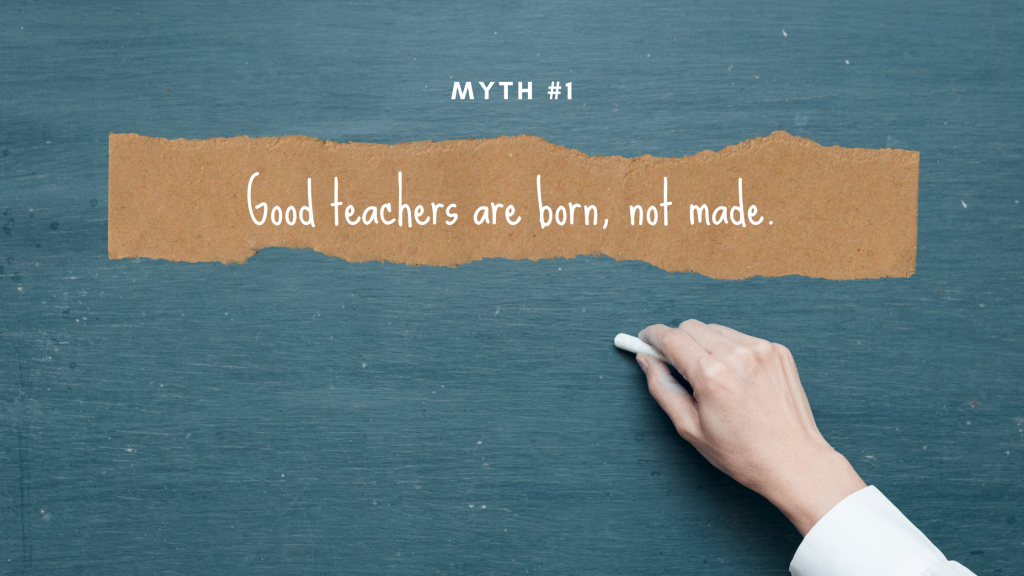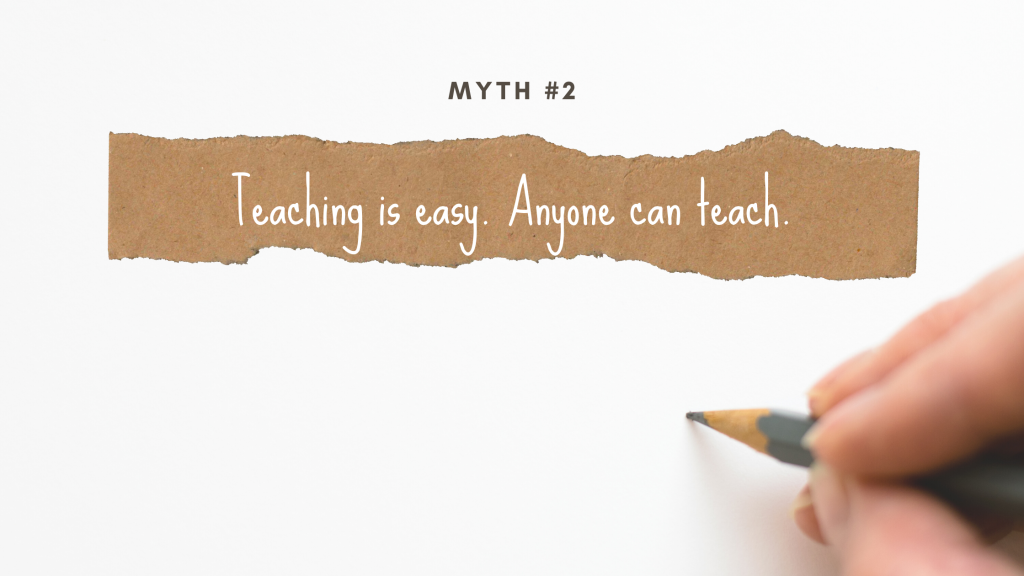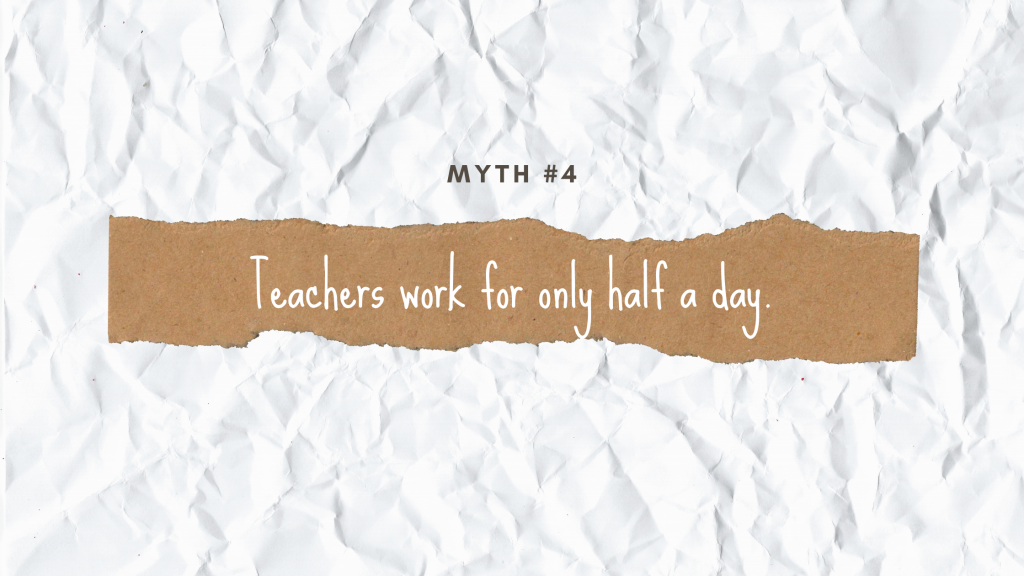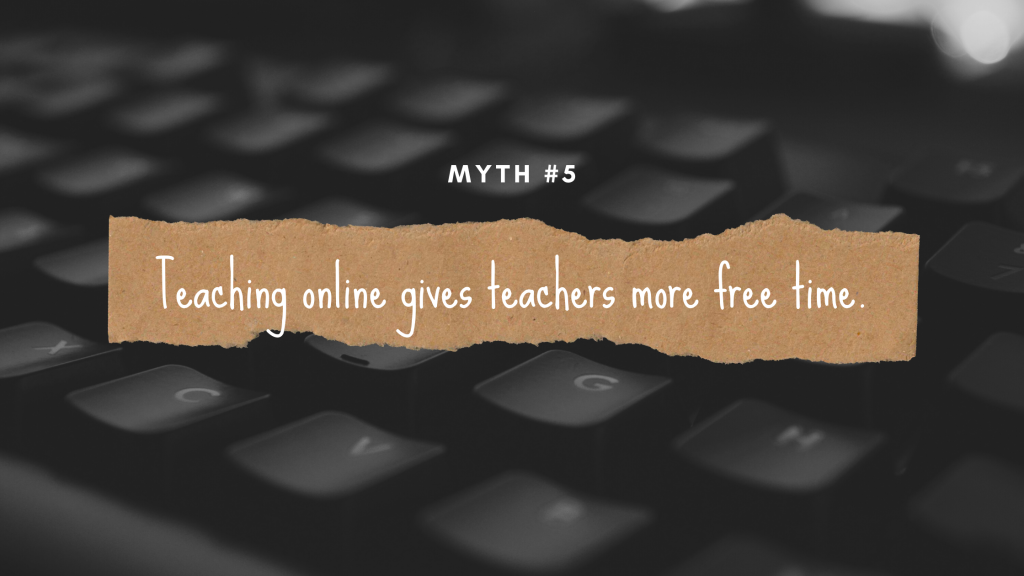What is the most outlandish myth you’ve heard about teaching?
“Teaching is easy.”
“Teachers work for only half a day.”
“Those who can, do; those who can’t, teach.”
If you are a teacher, you might have heard some of these assumptions about our profession. As a Malay saying goes, tak kenal maka tak cinta. Alicia ’14 reached out to the Teach For Malaysia Alumni community to dispel common teaching-related myths.

The Teach For Malaysia Alumni community consists of people from different walks of life, representing a range of upbringings, academic backgrounds, occupations, strengths and interests. To some extent, Fellows must exhibit Leadership Competencies, but we are trained to become teachers during the Pre-Service Program.
No surprise, then, that most of us believe that teaching is a learned activity. Teachers not only need to master the subject content, they must also learn how to make lessons engaging and relevant to learners. We learn how to adapt our teaching methods and techniques, finding an effective teaching style that suits us. Noel ’17 shares that teachers must have “a burning desire for knowledge and the sharing of knowledge” as well as the ability “to pass that on to someone else.”
We learn how to teach the child holistically, supporting their intellectual, social, and emotional growth and build positive teacher-student relationships. We learn how to gather, analyse and use data to address learners’ needs. We learn how to provide effective feedback, encourage and empower learners, and develop student leadership. We learn how to increase parental involvement and impact students’ lives beyond the classroom.
Good teachers are best grown in fertile ground. Huda ’15 points out that teachers, too, require “a nurturing environment to grow and fill in those big teacher boots!” and Emily ’18 added that we need a community of practice, which is defined by Jean Lave and Etienne Wenger as “a group of people who share a concern or a passion for something they do, and learn how to do it better as they interact regularly”. This is one of the reasons why Fellows gather regularly in Professional Learning Communities (PLCs) to support each other in their learning journeys.
Many teachers will testify to the necessity of professional development and learning throughout their career. Emily ’18 and Aifa ’19 highlighted the importance of reflective practice and growth mindset. Teachers must themselves seek feedback and reflect. Applying theory to practice is key, and thus good teachers are constantly improving their teaching practice.
Rachael ’14 puts it beautifully and succinctly, “While teachers need to have some character strengths which may be innate, a lot about being a good teacher is mastering certain skills and having the right mindset.“

The response was unanimous: teaching is not easy!
The core business of teaching in the classroom is already a complex task. Rachael ’14 points out that teachers “need to cater to so many needs and cognitive abilities while delivering content at the same time“. Noel ’17 calls attention to the fact that “students may not be in the condition to learn for 1001 reasons“. Gary ’20 echoes that our students constitute the most challenging aspect, though they are also arguably the most rewarding and fulfilling part of the job!
Delivering knowledge is not the only responsibility of a teacher; Huda ’15 highlights that teachers need “to share ideas and hold space while listening to learners and encouraging them to keep going“.
Teachers must also master the art of juggling, as they have numerous responsibilities outside of the classroom. Aifa ’19 pointed out that teachers need to focus on processes and administrative duties. Read more on teachers’ additional responsibilities in Myth #4!
Is it possible to do all the things we need to do? Yes, but the side effects are that we need to wake up early and we may feel perpetually tired, as shared by Jinghann ’19 and Emily ’18 respectively.
What is the most difficult part of teaching?
Teaching.
—Nancy Sual ’17
Thus far, we have learned that good teachers need to master certain knowledge, skills and mindsets, and that teaching is definitely not easy!
… but can anyone teach?
The consensus from the Alumni community is YES!
Emily ’18 points out that “you’d find a range of personalities in the profession”, while Huda ’15 and Nancy ’17 emphasised that anyone can teach if they have an open mind and heart to love teaching and learning. Learners play a role too, as Noel ’17 says, “Yes, provided the other party is willing to learn.”
Psst! If you are intrigued by the challenge of teaching, it’s not too late to apply for Teach For Malaysia’s 2022 Cohort!

A quote by John C. Maxwell says, “You never really know something until you teach it to someone else.”
English is a Germanic language, but it has had Latin and French influences. It is a difficult language to learn, with 44 phonemes and many exceptions to the rules. Phonics, spelling and grammar are tricky, while phrasal verbs, collocations and idioms might drive students to their wits’ end.
Personally, after seven years of teaching English, I have come to realise that there is no magic formula that works for every child (I hear some of you going, well, duh!). Besides improving my own teaching practice, it’s interesting to see how language learning is influenced by a range of factors such as linguistic aptitude, home language, motivation, learning environment, student personality, age, and language instruction.
Aifa ’19 shares that she has faced difficulties in teaching grammar because it is so intuitive to her, and she’s certainly not alone!
OMG takut giler grammar salah jadi ajaran sesat. —Yin Yee ’12
No! Teaching English is so much more than just being able to speak English. Very susah ok. —Julianna ’19
The same could be said of every subject area! A Math olympiad winner may not know how to teach Mathematics, and a great Olympic swimmer may not make a good swimming coach. Broadly, it is a myth that “if you know x, you can teach x.”

A teacher’s job does not end when the bell rings. (Yet none of us get paid for overtime work.)
Here is a non-comprehensive list of what teachers do before or after school, with contributions from Melissa ’14, Nancy ’17, Noel ’17, Amella ’18, and Munirah ’19:
- Teach extra classes
- Attend meetings
- Write lesson plans
- Prepare teaching materials and worksheets
- Mark books (and for language teachers, *shudder* endless essays)
- Complete and organise paperwork
- Plan school events
- Jaga koko or training (e.g. sports, choir, choral speaking, debate, kawad kaki, etc.)
- Write reports, reports, reports…
- Communicate with parents and students via WhatsApp groups
“Tau tau ja langit dah gelap dah nak malam.” —Munirah ’19

At the time of writing, schools in Malaysia have been reopened for 3-4 weeks. Pre-schoolers, Standard 1 and Standard 2 students had returned to school campuses on March 1, while the rest of the primary school year levels returned on March 8. Secondary school students are geared to return in the first week of April.
Most teachers have been conducting Pengajaran dan Pembelajaran di Rumah (PdPR) since October 2020.
If you want to know how hard Malaysian educators have been working during the pandemic, just take a look at their YouTube channels or Instagram accounts. Ask them how much time they spend preparing slides, scouring the internet for resources, talking to their screen on Google Meet, recording and editing videos, texting students and parents, and grading student work. Ask them if they’ve purchased new devices, subscriptions or software to enable them to do their job better.
Nancy ’17 reports that PdPR requires a lot more mental energy. “I can’t speak for all teachers but for me personally:
- It requires more planning for the online session. Brainstorming on making the lesson interactive and keeping students engaged.
- Not all students can follow the provided timetable because some of them share devices with family members. Messages will come in at random hours asking about this and that. One needs to keep reminding oneself that one is not a 24-hour kaunter pertanyaan.
- Parents mengadu their kids don’t want to study at home.
- Checking work and responses requires more time.
- Following up with those who are MIA.
- Dealing with frustration when we’ve spent hours planning and preparing materials, but only a handful of students submit their work.”
Teaching online certainly hasn’t been a walk in the park, but what a testament to the resilience and grit of our teachers!
There you have it: five popular myths related to teaching, debunked by the Teach For Malaysia Alumni community! Thank you to all the Alumni who contributed!
Are you curious about a particular aspect of the teaching profession? Are there any other myths you’d like us to debunk? Please comment below!
© April 2021 – Alicia ’14
